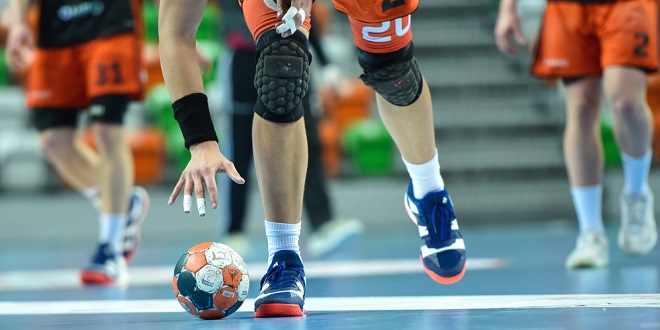If you follow any of the top sports leagues for team disciplines, you have probably already realised that whenever you watch a game, enter a web-page or download a mobile app, you get the most sophisticated performance stats delivered straight into your hands.
But, when did this become a trend? And how does it affect league organisers? Jakub Myszkorowski, Chief Commercial Officer at STATSCORE, explores the ‘then’, ‘now’ and ‘next’ for collecting and sharing sports data.
THEN: When did it start? Well, let us go back to the first half of the 20th century with the men in great wide pants and women with perms. Sports stadiums were then areas full of people smoking cigarettes and the first collectors of sport related statistics.
It all began with the analysis of basic stats. It is said that the first attempt to collect data with a system especially aimed at sporting events dates back to 1939. Not surprisingly, this is not the most remembered breakthrough of that year. And of course at that stage people were only focused on collecting the most basic stats.
Even recently one of the top UK-based football managers mentioned that from his perspective the only stat that he cares about is ‘goals scores vs goals conceded’. So plain and simple, so… brilliant.
If you think about it longer, this makes perfect sense. All football stats build a pyramid based on the number of goals scored. If there are goals, it means that there have to be shots and even shots on target.
Once you encounter shots, it’s easy to presume that there could have been some assists, passes or dribbles. And this is how it spread outwards from goals scored to the mountain of stats we have today.
So, back in the 50’s, they were mainly taking basic stats for coaching staff. Since this was the beginning of the process and not many teams were collecting the data what they lacked were the relative KPIs and benchmarks. The coaching staff of team A would have known the data for their own team but what about the numbers for team B?
At that time, no one even considered that the fans might want to engage with the use of stats. Indicating the number of goals scored and how much of the match had been played were the most important items on the menu back then.
NOW: Now if we take a quick jump to 2019, we see a world of sports stats served in many different ways and in many different styles to keep people engaged and interested while increasing their understanding of the sport. The data helps to bring meaning to the game, offering a much wider look at sporting events.
The merger between competition organisers and sports data providers got a big boost about a decade ago with the release of the Castrol Performance Index for football players. This was started in 2009 as a brave attempt to promote a trademark and connect it with sports performance. Today, the Castrol Indexes have gained a serious reputation around the world and have become one of the most cited rankings for individual sporting performances ever. This trend has also spread for more sports.
Seeing the success of Castrol, who built their reputation around indexing football data, more and more companies started to look for the chance to promote their brand by connecting it to sport. Many become successful thanks to the growing desire of fans for more of this kind of information.
Sport as a narration is empty inside – it provides just plain competition and it connects a lot of emotion, leaving a lot of space to be filled with the content of the brands that want to merge their identity with sports’ performance.
The organisers of sports leagues did not want to miss out on this game – most of them have already learned that by offering official competition data with the help of experts from this area, they can control how the stats are used by the market. What’s more, this is how the leagues started to earn money and achieve their business goals – directly from sports performance related data.
NEXT: Take for example STATSCORE, a sports data company with a vast experience in serving league organisers as official data providers. At this stage, STATSCORE has the exclusive title of official data providers for two major handball competitions (PGNiG Superliga, Slovanft Handball Extraliga) and for a major hockey league (Polish Hockey League). The data is collected from the venues by the most experienced scouts.
This guarantees the quickest and the most reliable process of collecting and sharing live action as it happens. The Scout Quality Control Team makes sure that the feed is 100% correct. It’s then displayed for the entertainment of fans fast and free of any mistakes.
Piotr Należyty is the Vice-Chairman of the Board at PGNiG Superliga, the top handball league in Poland. He is one of the key decision makers when it comes to using statistics from STATSCORE, recognising the importance of using the sport data for the brand building of the league organiser.
“Nowadays you lose fans’ interest and the possibility to build engagement in the event pregame and live, if you do not provide them with a full set of the info about the throws efficiency, blocks, goalkeepers interventions and the comparison of teams and players,” he said. “PGNiG Superliga chose long ago to use the statistical data significantly in order to build the attractiveness of the product.
“We also use chosen stats to handle the communication with the fans and to support the media. We believe that the importance of sports’ stats in building the attractiveness of the events will keep on rising and we plan to put an emphasis on it.”
From the fans perspective, it’s not just what data they get, but also how they can access it. This is why STATSCORE created a platform for league organisers called LeagueCenter.
This centre has all the key information about a competition along with live game visualisations, team comparisons and several levels of statistics for both the teams and players. LeagueCenter has become a powerful matrix for all leagues. The design and special advertising spaces allow league organisers to offer sponsors the opportunity to connect their brand with the performance of sport.
This is the most modern way to keep the fans engaged and make sure that the league organisers can proceed with their business goals.









